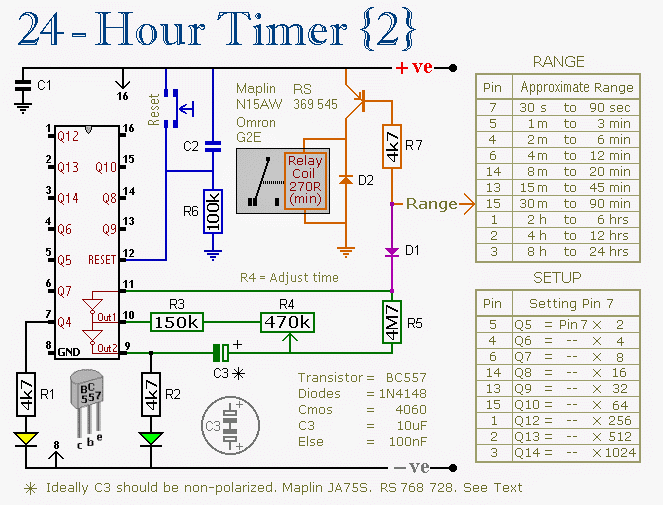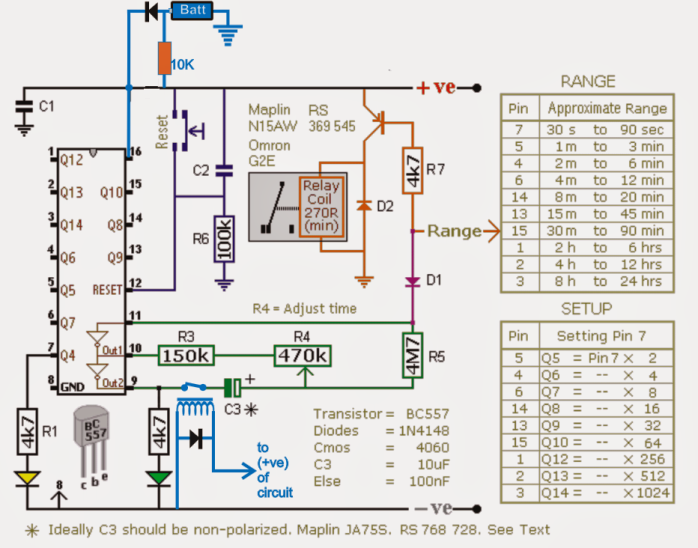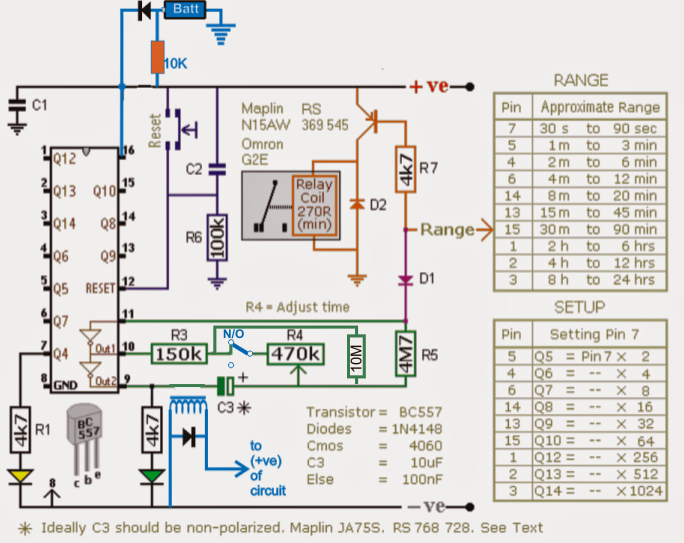The submit describes an effective remedy which might be useful for pausing the counting technique of a timer IC throughout power problems, and also restart the method when mains is restored, being sure an continuous working of the timer.

The altered version of the above 4060 timer circuit may be observed in the following schematic. The circuit contains an automated pause and restart function of the IC's counting procedure in the course of power downfalls and restorations respectively.

The parts that happen to be tinted in blue are the placed changes, we are able to notice a battery backup being added at pin16 of the IC via diodes, and a relay at pin9 of the IC.
Considering that the capacitor C3 is liable for beginning the counting strategy of the timer while it gets completely charged, this element might be aimed at the designed pausing/resuming of the timer.
As might be observed in the diagram, this is all simply executed by linking C3 to the "hot" pin9 of the IC via a pair of relay contacts (N/O to be precise).
Nevertheless for creating the above execution work, the IC ought to be provided with its basic running current and voltage while the mains is unavailable.
This is achieved by using a battery support to the IC via isolating diodes at pin16 of the IC.
The connected 10K resistor ensures that the battery maintains obtaining the needed trickle charge provided that the mains remains to be existing.
When power is very first turned on, the relay at pin9 triggers and links C3 in the line to ensure that the IC has the capacity to start usually and commence its counting method.
In an event of a mains malfunction,the battery requires over and sustains the IC powered in an uninterruptible way, although also at the same time the relay at pin9 of the IC disconnects C3 from the line to be able to quit the capacitor from reducing the kept immediate charge via pin9, this guarantees that the elapsed time period gets locked inside the capacitor for that specific instance until the mains is renewed.
The occasion mains power comes back C3 is associated back with the circuit by the relay, allowing it to restart the counting practice precisely from where it had quit and not from zero as it would elsewhere do if the above mods weren't integrated.
The above could possibly be also exactly the same used in other timer ICs for example in IC 555 monostable circuit or IC 4047, IC 556 IC 4022 etc.
As mentioned in the feedback the above designs might have some restrictions and imperfections, an affordable set about could be noticed in the below presented diagram which might hopefully permit minimum conflict, not a lot more than 1% +/-. Notice the relay connection in blue across R4 and the inclusion of the high value 10M hold resistor.

Leave a Reply